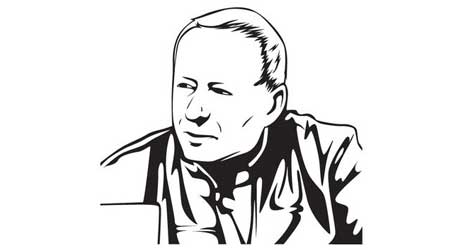« Back to Facilities Management Building Automation Category Home
Sensing the Change
June 9, 2017
- Building Automation
By Ken Sinclair

"Sensing the Change" is a double entendre, a particular way of wording that is devised to be understood in two ways, having a double meaning.
"Sensing the change" while changing our sensing.
Are we fully sensing the change IoT is bringing to our industry? Keep reading to get a sense of industry reaction and interaction.
Are we changing the measured variables of what we sense to evaluate satisfaction, comfort, and productivity?
Are we shifting from traditional temperature measurement to connection to occupant's personal data like a smart watch, or phone, or WiFi/cell signal?
Are we changing the light color to match lighting circadian rhythm? Tinting glass, controlling window shading to suit occupants?
Using AutomatedBuildings.com's virtual presence for global gathering helps us better sense worldwide change. We are media partners for all three of these events covered below.
Our last month's interview states, “The rise of interest in smart buildings, wearable technology, big data, the Internet of Things has led to a bespoke and exciting new event: Smart Buildings 17 launching, in partnership with British Land.”
Which leads us to this event, Smart Building - Disrupting the Business Model Helsinki, Finland. Buildings must cater to everyone.
Here is a quote from the group's website, from Tomi Teikko. "Tieto’s Keilalahti campus has transformed from traditional office to data-driven and emphatic activity-based environment." Better happiness = better productivity + the human as an IoT sensor.
Another quote: “For me, this activity-based way of working is the biggest benefit of a data-driven office. Being able to make data-driven decisions how to work means I’m happier in the office, and this, in turn, means I’m able to be more productive.
“I also act as an IoT sensor myself. My activities and my feedback can be used by the business to see exactly what parts of the building are working well, and where they need to pay closer attention, for example, when it comes to temperature, air quality, tools or furniture, noise and other factors. Gathering input from employees like me will be central to any business in the coming years — but they have to remember there is no one-size- fits-all solution. What’s comfortable for one person may be too hot or too cold for another, for example. Therefore, if firms are to get the best results, they need solutions that work for everyone.”
The program for this event starts with “Disrupt, Discuss, Develop, and Discover.”
Unfortunately, this event is on at the same time as our Realcomm/IBcon event, but all events indicate that we are globally starting to sense the change around us. At the Realcomm event, I am part of a discussion on health performance indicators.
It would be great to do a global mash-up of all these events.
A June article — Let the People Rule: Harnessing occupancy data from IT for optimizing HVAC operation, by Brad White, principal, SES Consulting Inc. and Stefan Storey, CEO, building scientist, Sensible Building Science — gives us a peek into the world of virtual data capture.
This article feeds from last month's interview with Sensible Building Science. “We are dedicated to helping building owners and managers attain comfortable and energy efficient buildings with our automated virtual occupancy metering solutions” — Stefan Storey, Sensible Building Science.
Stefan is sensing something different. Humm ... does the name of his company, Sensible Building Science, suggest as an industry we have not been sensible? Big smile. Or is it a play on sensible sensing virtually changing how we do not sense people but capture their big data?
Intel thinks so; please read this: The Sea Change is Happening – IT converging with OT, by Sunita Shenoy, director of products, Industrial Internet of Things Group, Intel.
Jim Lee industry BACnet pioneer is calling for a new deal, The New Deal for Buildings. “We are working to simplify how building owners and managers view building systems; specifically, we are working to outline fundamental building blocks that owners should demand from the BAS industry,” James Lee, CEO and president, Cimetrics Inc.
In this interview we discuss sensing the change, How does Indoor Air Quality influence occupant happiness and productivity?
Jane and I have been sensing the change in our industry for many years, as we just celebrated our fiftieth wedding anniversary and have worked together in this industry as AutomatedBuildings.com, just starting our nineteenth year of our retirement project. Our day job was being energy and automation consultants as Sinclair Energy Services — "SES" — for 24 years before that. Our early married years were spent in the industry learning the trade, so we are lifers, married to this industry till death do us part.
Looking back, every day has been about change and how we embrace it. In this Digital Dinosaur Does Dallas poke from 2000 we provide some insight into our journey. In the bigger picture, we have seen pneumatics change to IoT, and we think that change will not go away or slow down anytime soon, so best get on with what you do best, adapt to survive and embrace change or suffer the consequence.
We are very pleased that the burning embers of our consulting company SES have been flared into a fire in the form of a great group of kids, our extended family, who embrace change and even at times create the change in the form of their new company of energy engineers, design engineers, data scientist, and engagement specialist as the new SES.
Ken Sinclair is the founder, owner, and publisher of an online resource called AutomatedBuildings.com. He writes a monthly column for FacilitiesNet.com about what is new in the Internet of Things (IOT) for building automation.








